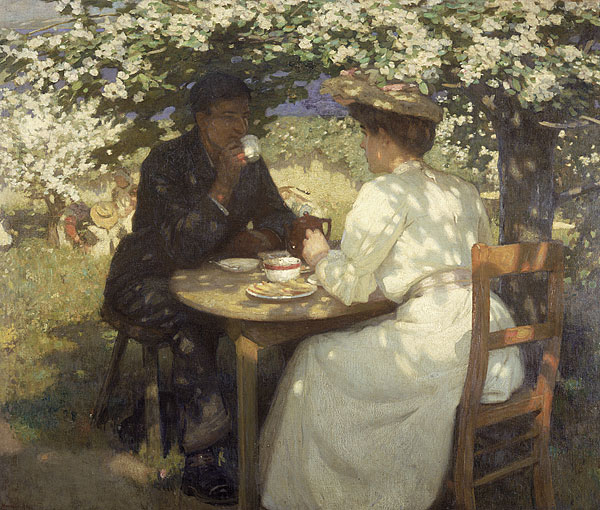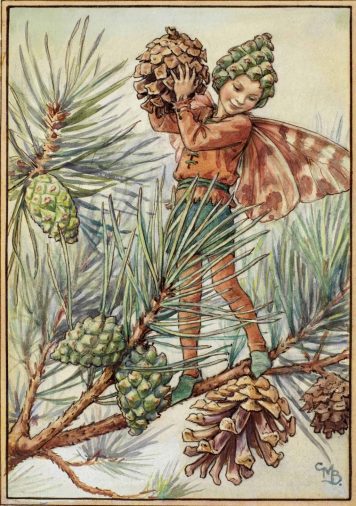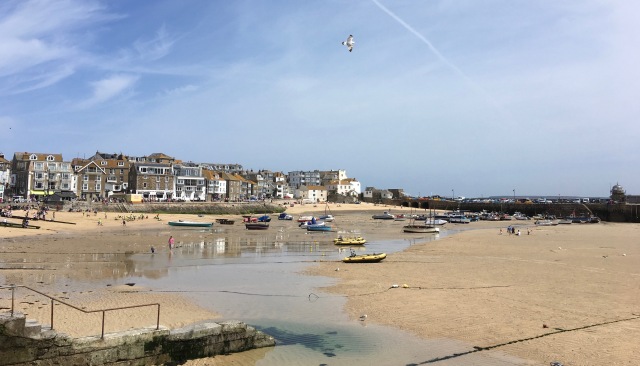“The garden as a stage for magical, nostalgic and atmospheric encounters in mostly British art: Victorian/Edwardian childhood idylls – Beatrix Potter, Walter Crane, “The Secret Garden”, Cicely Mary Barker’s “Flower Fairies”; fantastical elements in Burne-Jones, Rossetti, Simeon Solomon; the enclosed world of the garden, symbolic or abstracted, for 20th-century painters as diverse as Stanley Spencer and Patrick Heron. The show will move on to London’s William Morris Gallery in October.” Jackie Wullschlager [Brief mention in Critic’s Choice in this weekend’s FT]
The exhibition at The Laing Gallery opened in Newcastle yesterday … and I just happened to be in town. I’d met with two friends together with whom I’m reading and discussing (and enjoying) Thomas Mann’s “The Magic Mountain” (854 pages) 
They live on Tyneside and I’m in Leeds. Sometimes we meet at pubs or cafes between our two cities and sometimes I travel up to Newcastle for the day. Yesterday was one of those days.
Welcome to The Laing
Interestingly, I wrote here about a previous visit to The Laing: “The Arts and Crafts House; then and now”. So, I’d looked at houses and now I was seeing gardens.
“From the Pre-Raphaelites and French Impressionists to the Bloomsbury Group and 20th century abstraction, artists have taken inspiration directly from the gardens around them. These secret, enveloping and sometimes mysterious spaces are seen through windows, in panoramas and often repeated in different lights and seasons. The Enchanted Garden will feature artists including Claude Monet, Edward Burne-Jones, Dante Gabriel Rossetti, Beatrix Potter, Pierre Bonnard, Lucien Pissarro, William Morris, Patrick Heron, Francis Bacon, Stanley Spencer, Vanessa Bell, and Duncan Grant.
The Enchanted Garden will bring the Laing’s painting ‘The Dustman or The Lovers’ by Stanley Spencer into the context of major works by British and French artists from across the UK and beyond which explore the garden as a ‘stage’ for the extraordinary, the magical, the atmospheric and the nostalgic.” [Laing Introduction]
No photography is allowed in the exhibition but I’ve managed to cobble together some thoughts and pictures available elsewhere on the internet. My favourite painting was

In the Spring c.1908
Harold Knight (1874 – 1961) oil on canvas
132.3 (h) x 158.2 cm
Laing Art Gallery, Newcastle upon Tyne, Tyne and Wear Museums
© Harold Knight, reproduced courtesy of Curtis Brown Group Ltd [source]
A relaxed tea in the garden on a sunny Edwardian afternoon: delightful.
Many connections were made throughout the three-room show between literature and art. The FT review mentions some of these. Here is the Pine Tree Fairy shown alongside 5 other Flower Fairies with their poems.

A tall, tall tree is the Pine tree,
With its trunk of bright red-brown—
The red of the merry squirrels
Who go scampering up and down.
There are cones on the tall, tall Pine tree,
With its needles sharp and green;
Small seeds in the cones are hidden,
And they ripen there unseen.
The elves play games with the squirrels
At the top of the tall, tall tree,
Throwing cones for the squirrels to nibble—
I wish I were there to see!
Several books were on display including Arthur Rackham’s illustrations to Lewis Carol’s “Alice’s Adventures in Wonderland” open at The Mad Hatter’s Tea Party [source];

quotations from Vita Sackville-West’s “The Garden“;
pages from Beatrix Potter’s exquisitely illustrated children’s books (I didn’t note the particular pages selected)
and the three most important events in the Bible take place in gardens : The Garden of Eden, The Garden of Gethsemane and the Garden Tomb.
There was also a beautiful little painting believed once to be the work of Giotto but this has now been disproved. ‘Noli Me Tangere’ has many versions and I’ve been unable to find the exact one but for the sublime colours to have survived since c1350-1375 is nothing short of a miracle.
The choices were well chosen to fit into their particular theme and many of the paintings were from the Laing permanent collection.
















